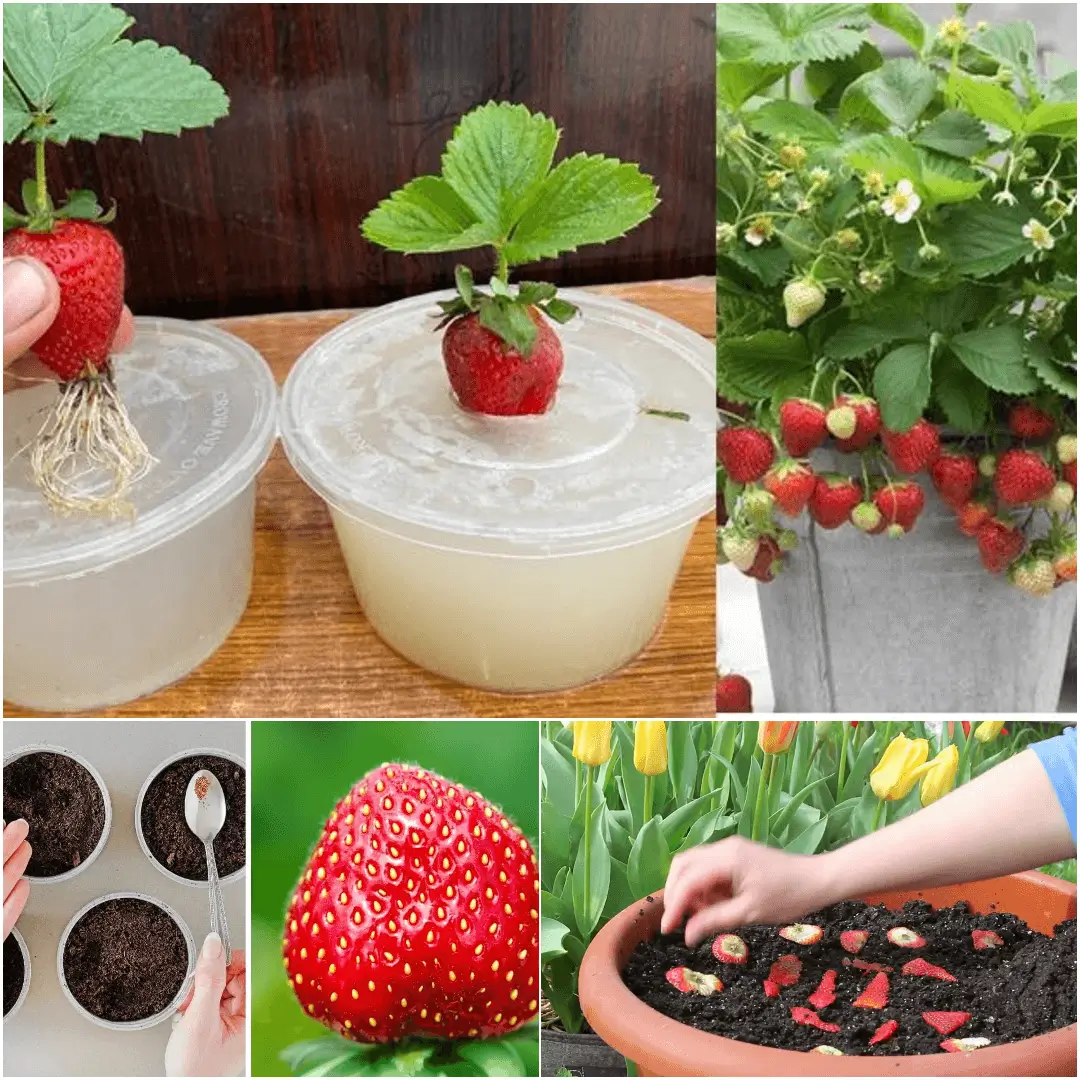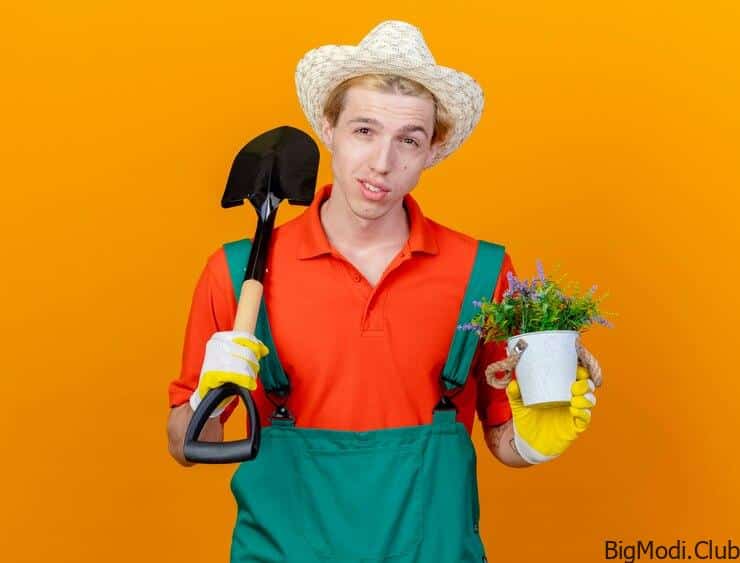Growing your own strawberries can be a fun and rewarding project, especially when you do it using seeds from an existing strawberry. While most people propagate strawberries using runners or splitting the crown, growing them from seeds inside a strawberry is a lesser-known but equally effective method. Whether you’re an experienced gardener or just starting, this guide will walk you through everything you need to know to grow strawberries from a strawberry.
Understanding Strawberry Propagation
Strawberries are typically propagated through four common methods: buying plants, splitting crowns, growing from runners, and growing from seeds. While buying plants and using runners are popular because they’re quick and easy, growing strawberries from seeds harvested from a strawberry is a rewarding process for those who want to experiment and perhaps save a bit of money in the process.
What Are Strawberry Seeds (Achenes)?
If you’ve ever wondered where the seeds of a strawberry are, you’re not alone! Those tiny white or green dots on the outside of a strawberry are called achenes. Each achene contains a seed, and believe it or not, it’s possible to harvest these seeds and grow them into new strawberry plants. Picking seeds from your favorite strawberry variety can help you grow the same tasty fruit in your garden.
Harvesting Seeds from a Strawberry
How to Choose the Right Strawberry for Seed Harvesting
Not all strawberries are created equal. When choosing a strawberry to harvest seeds from, it’s important to select a ripe, healthy, and ideally organic fruit. Avoid strawberries that have been treated with chemicals, as this can affect seed viability.
Methods for Harvesting Seeds
There are two main ways to extract seeds from a strawberry:
- Mashing and Straining Method:
Gently mash the strawberry using your hands or a blender set on low. Strain the strawberry pulp through a fine sieve and rinse the seeds under cool water. You’ll be left with tiny seeds ready for drying. - Thinly Slicing and Drying Method:
Another method involves slicing the strawberry thinly and letting the slices dry out naturally. Once the fruit has dried, you can gently rub the slices to free the seeds.
Preparing Strawberry Seeds for Planting
Once you’ve harvested your strawberry seeds, they’ll need to dry before planting. Spread them out on a paper towel, coffee filter, or wax paper, and leave them to dry for about 1-2 weeks. Properly dried seeds are crucial for successful germination.
The Importance of Cold Stratification
Strawberry seeds have a special requirement before they will sprout – they need to experience a period of cold, which mimics winter conditions.
What is Cold Stratification?
Cold stratification is a simple process of exposing seeds to cold temperatures for several weeks to trigger germination. It helps break the seed’s dormancy, encouraging it to sprout when warmer weather returns.
Methods for Cold Stratification
There are two common ways to cold-stratify strawberry seeds:
- Refrigeration Method:
Place the seeds in a sealed plastic bag and store them in the fridge for 4-6 weeks. This process will simulate the cold winter environment that strawberry seeds need to germinate. - Outdoor Stratification Method:
If you prefer a natural approach, you can plant the seeds outdoors in the fall and let nature take its course. The cold weather will stratify the seeds over winter, and they’ll sprout in the spring.
Planting Strawberry Seeds
Once your seeds have been cold-stratified, it’s time to plant them. Use a sterile seed-starting mix, which provides the ideal environment for your seeds to grow. Plant the seeds in trays or pots, and don’t worry about covering them with soil – strawberry seeds are tiny and can easily get lost if buried too deep.
Watering and Care During Germination
Strawberry seeds need consistent moisture to germinate. Because the seeds are so small, it’s best to water them with a mister instead of a traditional watering can. Cover the trays with a plastic dome or clear plastic wrap to create a mini greenhouse effect, which will help maintain the moisture and warmth needed for germination.
Germination Time and Plant Growth
Patience is key when growing strawberries from seeds. It can take anywhere from 3 to 4 weeks for the seeds to germinate. Once they sprout, you’ll see tiny green seedlings, and your strawberry plants will continue to grow.
In the first year, don’t expect much fruit – strawberry plants grown from seeds typically focus on establishing strong roots and healthy leaves. The real bounty usually comes in the second year.
Transplanting Strawberry Seedlings
When your seedlings are big enough to handle (usually after developing a few sets of true leaves), it’s time to transplant them. Strawberries love well-drained soil and full sun, so pick a spot in your garden that gets plenty of light. You can also transplant them into containers if space is limited.
Caring for Young Strawberry Plants
Once your seedlings are in their new home, they’ll need consistent care. Make sure to water them regularly, but don’t overdo it – strawberries don’t like soggy roots. Be sure to watch for pests like slugs, which love young plants, and use natural pest control methods whenever possible.
Alternative Methods of Seed Harvesting
For those looking for a less messy approach to seed harvesting, the thinly sliced and dried strawberry method can be an easier option. This technique involves fewer steps, but it requires more patience, as the drying process can take a bit longer.
Can You Grow Strawberries from Store-Bought Strawberries?
Yes, you can grow strawberries from store-bought fruit, but there are a few challenges to be aware of. Many commercially sold strawberries have been treated with chemicals that can hinder seed growth. Additionally, the seeds from store-bought strawberries might not produce plants identical to the fruit you purchased, as they are often hybrids. For best results, it’s recommended to use organic or locally grown strawberries if you want to try this method.
Why Strawberry Tops Won’t Grow New Plants
Unlike some vegetables and fruits, strawberries can’t be regrown from scraps like their tops. While you can grow new plants from seeds within the fruit, cutting off the top of a strawberry and planting it won’t yield any new growth.
Common Issues When Growing Strawberries from Seeds
Growing strawberries from seeds can be a bit tricky, and you might encounter some problems. Germination rates can be low, especially if the seeds haven’t been properly stratified. Additionally, plants grown from seed might not always produce a large amount of fruit, particularly in the first year.
Benefits of Growing Strawberries from Seeds
Despite the challenges, growing strawberries from seeds has its perks. It’s a budget-friendly way to get multiple plants from a single fruit, and it allows you to grow your favorite varieties year after year. Plus, it’s a rewarding experience to see a tiny seed grow into a full fruit-bearing plant!
FAQs
How to Get Strawberry Seeds from a Strawberry?
To get seeds from a strawberry, follow these steps:
- Select a ripe, healthy strawberry, preferably organic or untreated.
- Gently mash the strawberry using your fingers or a blender set to low.
- Place the mashed fruit in a fine sieve and rinse it under cool water, removing the pulp and leaving the tiny seeds behind.
- Alternatively, you can thinly slice the strawberry and let the slices dry out completely. Once dry, rub the slices gently to release the seeds.
- Dry the seeds on a paper towel for 1-2 weeks before planting or storing.
How Do You Grow Strawberries from a Slice?
Growing strawberries from a slice is a simple and natural method:
- Slice a ripe strawberry thinly, ensuring you cut through the small seeds on the skin.
- Lay the slices flat on a piece of paper towel or wax paper and allow them to dry for a few days.
- Once the slices are dry, gently rub them to release the seeds or plant the entire dried slice directly in soil.
- Place the slice or seeds on the soil surface in a seed-starting tray. Do not cover them with soil, as strawberry seeds need light to germinate.
- Mist the soil lightly with water, cover the tray with plastic wrap, and place it in a warm, bright location.
- The seeds will germinate in 3-4 weeks, and seedlings will begin to appear.
How to Grow Strawberries from a Strawberry Indoors?
Growing strawberries indoors from a strawberry requires attention to lighting and temperature:
- Harvest seeds from a ripe strawberry by mashing or slicing and drying the fruit.
- Prepare the seeds by drying them on a paper towel for 1-2 weeks.
- Cold-stratify the seeds by placing them in a sealed bag in the fridge for 4-6 weeks.
- After stratification, plant the seeds in a seed-starting tray filled with a sterile seed-starting mix.
- Place the tray near a sunny window or use grow lights to provide the seedlings with 12-16 hours of light per day.
- Keep the soil moist by misting it regularly and cover the tray with plastic wrap to retain humidity.
- Once the seedlings are a few inches tall, transplant them into pots with well-drained soil, and continue to provide adequate light and water.
How to Grow Strawberries from a Runner?
Growing strawberries from runners is an easy and popular method:
- Wait for your strawberry plant to produce runners, which are long, thin stems with small plants (daughter plants) attached at the ends.
- Place the daughter plant directly on the soil next to the mother plant, ensuring it makes contact with the soil.
- Pin the runner to the soil using a U-shaped garden pin or a small rock to secure it in place.
- Water the runner regularly to encourage it to develop roots.
- After a few weeks, the daughter plant will have its own root system. You can then cut the runner, separating it from the mother plant.
- Transplant the new strawberry plant to a permanent location in your garden or a container.


